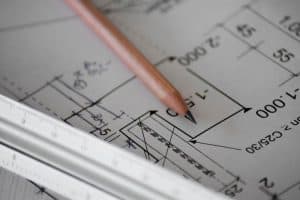Adhesive taping speeds installation, but you’ll need to select the right tape and the right fabricator.
What’s the best way to attach industrial rubber products like gaskets, edge trim, and weather-stripping to glass, plastic, or metal surfaces? Mechanical fastening is reliable, but it’s also time-consuming. Adhesive taping can speed assembly, but you’ll need to select the right tape and then fabricate it efficiently.
In this article from Elasto Proxy, you’ll learn about the advantages of adhesive taping. You’ll also learn how to select the right high-strength tape for your specific application. By choosing taped gaskets for sealing and insulation, you can save time and money during assembly operations.
Adhesive Taping Advantages
Adhesive taping provides faster installation times than plastic pins, which require drilling a hole for each pin and then pushing the pins through. Adhesive taping is also a plus when space is limited. Products such as acrylic foam tapes are compressible and can provide cushioning, noise control, and vibration resistance. By comparison, mechanically-fastened assemblies can loosen over time and cause noise and vibration.
Adhesive tapes provide strong, reliable bonds and can expand or contract with changes in temperature. Stress dissipates throughout the tape’s core and isn’t just concentrated at the bond line. By contrast, stress in screwed joints concentrates in the screw’s threaded portions. Under variable load conditions, these threaded sections are especially vulnerable.
Adhesive tapes also conform to surface irregularities. Glass, plastic, and metal surfaces remain clean and smooth since there aren’t any raised areas with bolts, pins, or screw heads. Adhesive taping also provides engineers with a variety of options. For example, you can choose gasket tapes that provide temporary or permanent fastening, or that can withstand indoor or outdoor conditions.
Adhesive Tape Types: HATS and PSA
Adhesive tapes for rubber gaskets typically use either a pressure-sensitive adhesive (PSA) or a heat-activated taping system (HATS). PSA tapes can be single-sided or double-sided. Some use a high-performance adhesive for high tack and peel resistance. Installers like PSA tapes because assembly involves removing a release liner, positioning the rubber product, and applying hand pressure.
HATS tapes use heat and curing so that the tape and gasket are fused together. HATS high-bond tapes are a good choice for door seals that might otherwise come apart from repeated pushing on the door assembly. These gasket tapes also feature strong stress-handling and weather-stripping capabilities for outdoor use. In mobile equipment, they can dampen vibrations and provide a quieter ride.
During adhesive tape selection, engineers need to consider all of their application requirements. For example, do you need a gasket tape that’s compatible with a vehicle paint system or that can withstand conditions such as a high-humidity, tropical environment? If your sealing application is in the aerospace industry, do you need an adhesive tape that can withstand deicing agents or cold temperatures instead?
Taped Gasket Fabrication
Elasto Proxy sources 3M™ tapes and fabricates taped gaskets from lengths of rubber that are cleanly cut and spliced. With HATS products, the taping machine in our manufacturing center uses an infrared (IR) pre-heater for improved bond strength and reduced energy consumption. The IR pre-heater is used to heat the surface of the tape before it passes through the taping machine, where hot air finishes the job.
To speed this labor-intensive operation, our taping machine has an automatic feeder. With both HATS and PSA tapes, automatic feeding reduces setup times and streamlines production by eliminating the need for operator intervention. The taped gaskets that you’ll receive from Elasto Proxy are fabricated efficiently and can speed your own assembly operations because they arrive ready-to-install.
To learn more about taped gaskets, contact us.










